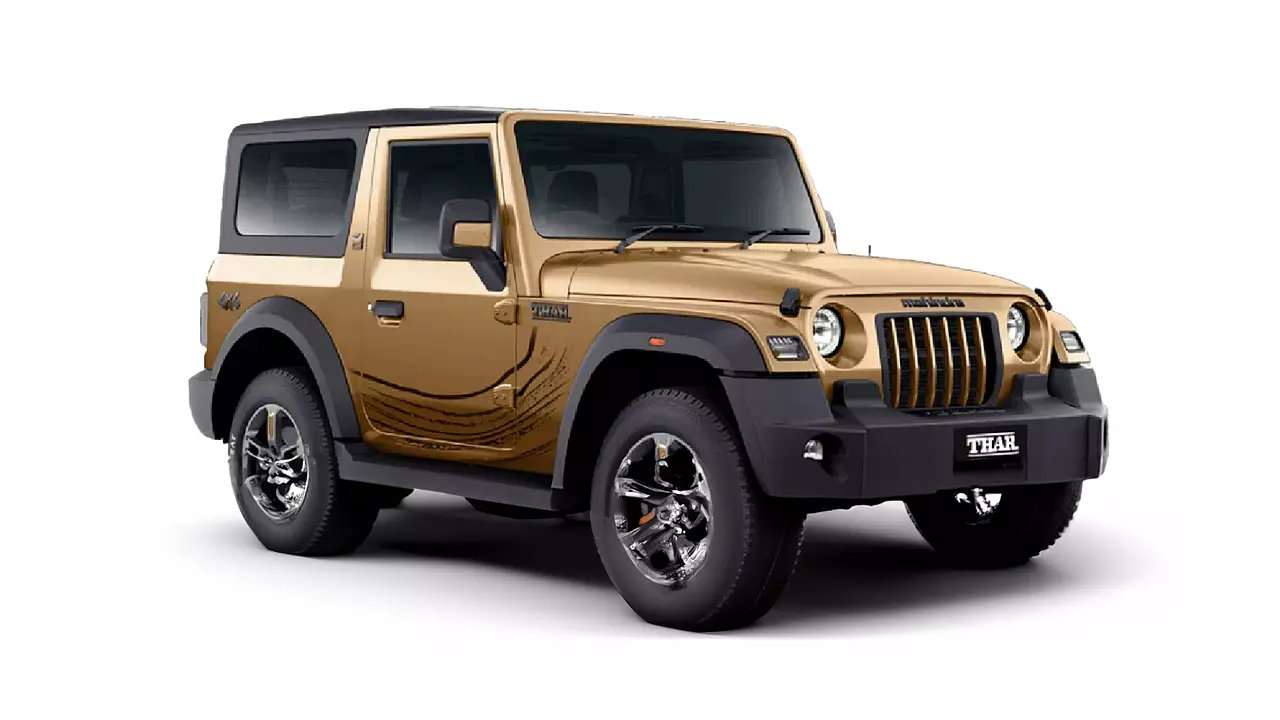The modern SUV landscape presents a fascinating dichotomy between vehicles designed to conquer nature’s most challenging obstacles and those crafted for urban sophistication and on-road excellence.
This comprehensive analysis explores ten exceptional SUVs that represent the extremes of ground clearance and water-fording capabilities, showcasing how automotive engineering adapts to diverse consumer needs and driving environments.
Water-fording depth represents one of the most demanding tests of an SUV’s off-road prowess. It measures a vehicle’s ability to traverse flooded roads, river crossings, and waterlogged terrain without compromising mechanical integrity or passenger safety.
The engineering behind exceptional water-fording capabilities involves sealed electrical systems, elevated air intakes, specialized underbody protection, and robust drainage systems. These features enable vehicles to maintain operation in conditions that would disable conventional automobiles.
Conversely, low ground clearance in SUVs reflects a design philosophy prioritizing aerodynamic efficiency, handling precision, and fuel economy.
These vehicles sacrifice some off-road capability for enhanced on-road dynamics, reduced wind resistance, and improved stability at highway speeds.
This design approach appeals to consumers seeking SUV versatility without compromising driving refinement or environmental responsibility. The contrast between these two categories reveals the remarkable adaptability of modern SUV engineering.
High water-fording vehicles typically feature robust construction, advanced all-wheel-drive systems, and specialized components designed to withstand harsh environments.
Meanwhile, low-clearance SUVs emphasize lightweight construction, sophisticated suspension tuning, and aerodynamic optimization to deliver car-like handling characteristics within SUV packaging.
Understanding these distinctions helps consumers make informed decisions based on their specific needs, whether navigating flood-prone regions, traversing challenging terrain, or prioritizing urban driving efficiency and environmental consciousness.
5 SUVs with Exceptional Water-Fording Depth
These robust off-road SUVs feature impressive water-wading depths that allow them to traverse flooded roads, creek crossings, and deep puddles with confidence and safety.
The Land Rover Defender comes with the highest water-wading capability among all the cars. The Defender is being sold with the most impressive water-wading capability of 900 mm, while other capable SUVs offer depths ranging from 700mm to 800mm for serious water-crossing scenarios.
These vehicles incorporate specialized air intake positioning, sealed electrical components, and reinforced underbody protection designed specifically for water crossings.
Their advanced four-wheel-drive systems work in conjunction with electronic traction control to maintain grip and momentum through challenging water obstacles.
The combination of high ground clearance, sophisticated drivetrain technology, and waterproofed critical components makes these SUVs ideal choices for flood-prone areas or adventurous off-road exploration where water crossings are inevitable.
1. Rivian R1S Electric SUV
The Rivian R1S stands as the undisputed champion of water-fording capability among modern SUVs, boasting an extraordinary 1,000mm (39.4 inches) wading depth that surpasses virtually every traditional internal combustion engine competitor.
This remarkable achievement stems from Rivian’s revolutionary electric architecture, which eliminates many traditional vulnerabilities associated with water crossings.
The R1S’s exceptional water-fording capability begins with its innovative “Tank Turn” quad-motor system, where each wheel receives independent power delivery from dedicated electric motors.
This configuration eliminates the need for traditional differentials, transfer cases, and complex drivetrain components that typically create vulnerability points during water crossings.
The absence of air intake systems, exhaust components, and traditional engine cooling requirements allows the R1S to maintain full functionality even when substantially submerged.
Rivian’s engineering team designed the R1S with a completely sealed battery pack and electrical architecture located high within the vehicle’s structure.
The battery system features advanced thermal management and waterproof sealing that exceeds IP67 standards, ensuring continued operation even during extended submersion.
The vehicle’s electrical systems utilize marine-grade connectors and specialized coatings that prevent corrosion and electrical shorts in aquatic environments.
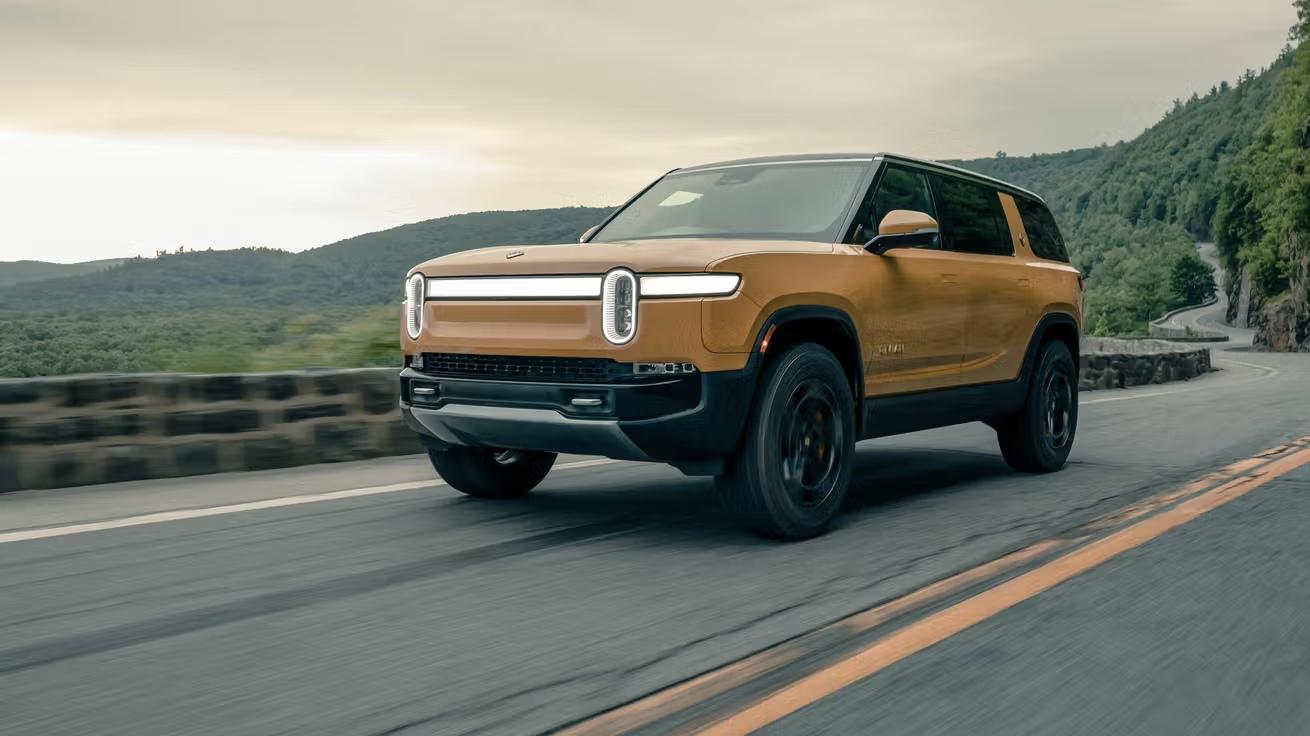
The R1S incorporates advanced air suspension technology that provides variable ride height adjustment, allowing drivers to maximize ground clearance before entering water obstacles.
At maximum elevation, the vehicle achieves over 15 inches of ground clearance, positioning critical components well above the waterline during most crossing scenarios.
The suspension system automatically adjusts damping characteristics to maintain stability and control when traversing uneven underwater terrain.
Beyond its impressive technical specifications, the R1S features sophisticated water detection systems that monitor depth and provide real-time feedback to drivers.
The vehicle’s advanced computer systems continuously assess environmental conditions and adjust power delivery, traction control, and stability management to optimize performance during water crossings.
These systems work in conjunction with specialized underbody protection that prevents debris from damaging critical components while maintaining proper water drainage.
The R1S’s water-fording prowess extends beyond mere depth capability to encompass practical considerations such as approach and departure angles, breakover angles, and overall water displacement characteristics.
The vehicle’s aerodynamic design minimizes bow wave formation, reducing the risk of water entering cabin areas or overwhelming the vehicle’s drainage systems.
This comprehensive approach to aquatic capability makes the R1S an exceptional choice for adventurous drivers who regularly encounter challenging water obstacles.
2. Toyota Land Cruiser 300 Series
The Toyota Land Cruiser 300 Series maintains its legendary reputation for conquering challenging terrain with an impressive 700mm (27.6 inches) water-fording depth, representing decades of refinement in off-road engineering excellence.
This capability stems from Toyota’s meticulous attention to sealing, component placement, and drivetrain optimization specifically designed for extreme environmental conditions.
The Land Cruiser’s water-fording capability begins with its elevated air intake system, strategically positioned to prevent water ingestion even during the deepest crossing attempts.
The intake snorkel design incorporates multiple filtration stages and water separation chambers that ensure only clean, dry air reaches the engine even in humid, splash-prone environments.
This system works in conjunction with a sophisticated engine management system that monitors air quality and adjusts fuel delivery to maintain optimal combustion under challenging conditions.
Toyota’s engineering approach emphasizes component redundancy and robust sealing throughout the Land Cruiser’s mechanical systems.
The transmission, transfer case, and differential housings feature multiple seal layers and pressure equalization systems that prevent water intrusion while maintaining proper lubrication under extreme conditions.
These systems undergo extensive testing in controlled environments that simulate prolonged submersion and thermal cycling to ensure long-term reliability.
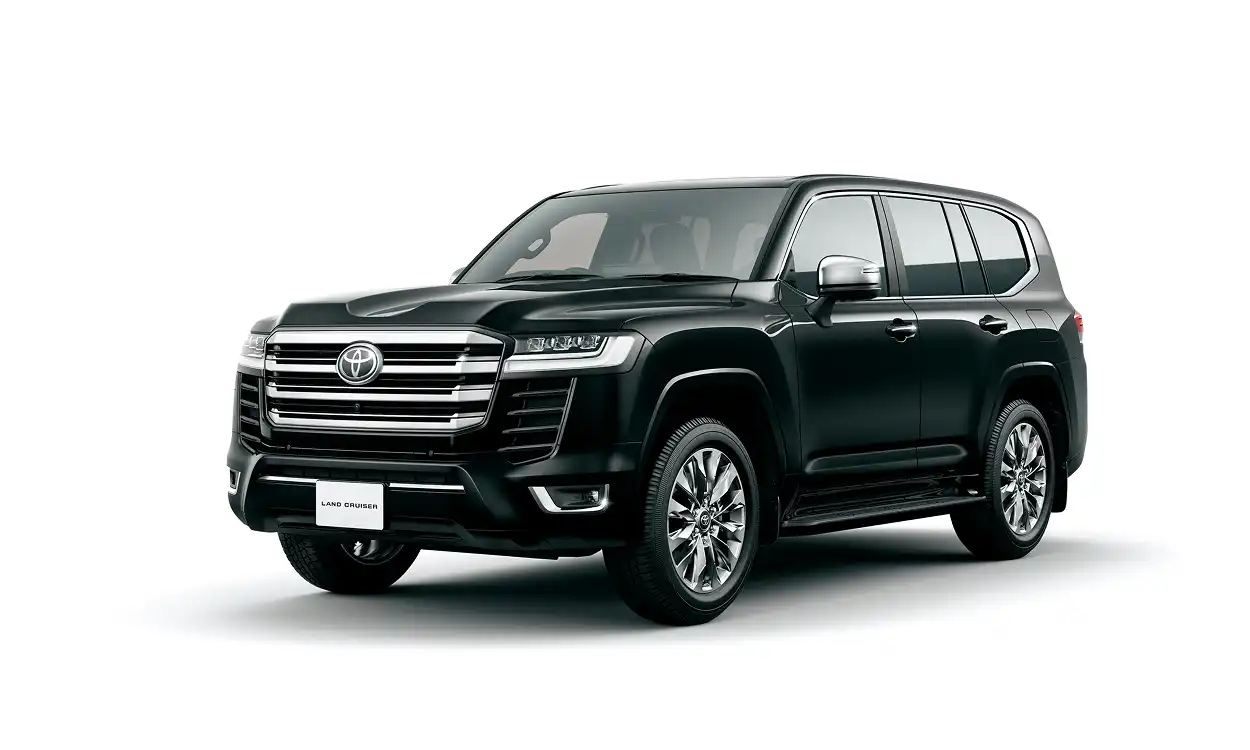
The Land Cruiser’s electrical architecture incorporates marine-grade components and specialized protective coatings that resist corrosion and electrical failures in aquatic environments.
Critical electrical connections utilize waterproof connectors with positive sealing mechanisms, while the vehicle’s computer systems feature robust environmental protection that exceeds automotive industry standards.
The alternator, starter, and other electrical components receive special treatment to ensure continued operation during and after water exposure.
Advanced traction management systems optimize the Land Cruiser’s performance during water crossings by continuously monitoring wheel slip, power delivery, and vehicle stability.
The Multi-Terrain Select system includes specific programming for water and mud conditions, adjusting throttle response, transmission shift points, and differential locking to maintain forward momentum while preventing wheel spin that could compromise traction or create dangerous bow waves.
The Land Cruiser’s mechanical design emphasizes durability and serviceability, with easily accessible drain plugs and inspection points that facilitate post-crossing maintenance.
The vehicle’s robust construction includes reinforced floor panels, sealed wiring harnesses, and strategically placed drainage channels that prevent water accumulation in critical areas.
This comprehensive approach ensures that the Land Cruiser maintains its legendary reliability even after repeated exposure to challenging aquatic environments.
3. Ford Ranger Raptor
The Ford Ranger Raptor delivers exceptional water-fording capability with an 850mm (33.5 inches) wading depth, combining high-performance off-road engineering with practical utility vehicle functionality.
This achievement represents Ford’s commitment to creating vehicles that excel in challenging environments while maintaining everyday usability and driving refinement.
Ford’s approach to water-fording capability in the Ranger Raptor centers on comprehensive system integration and component optimization.
The vehicle’s twin-turbocharged V6 engine features a sophisticated air intake system with elevated positioning and advanced filtration that prevents water ingestion during deep crossings.
The intake design incorporates multiple bypass valves and drainage systems that automatically expel accumulated water while maintaining optimal airflow for engine operation.
The Ranger Raptor’s electrical architecture utilizes Ford’s latest waterproofing technologies, including sealed junction boxes, marine-grade connectors, and protective coatings on critical components.
The vehicle’s multiple computer systems feature robust environmental protection that maintains functionality even during prolonged exposure to moisture and humidity.
Advanced diagnostic systems continuously monitor electrical system integrity and provide early warning of potential water-related issues.
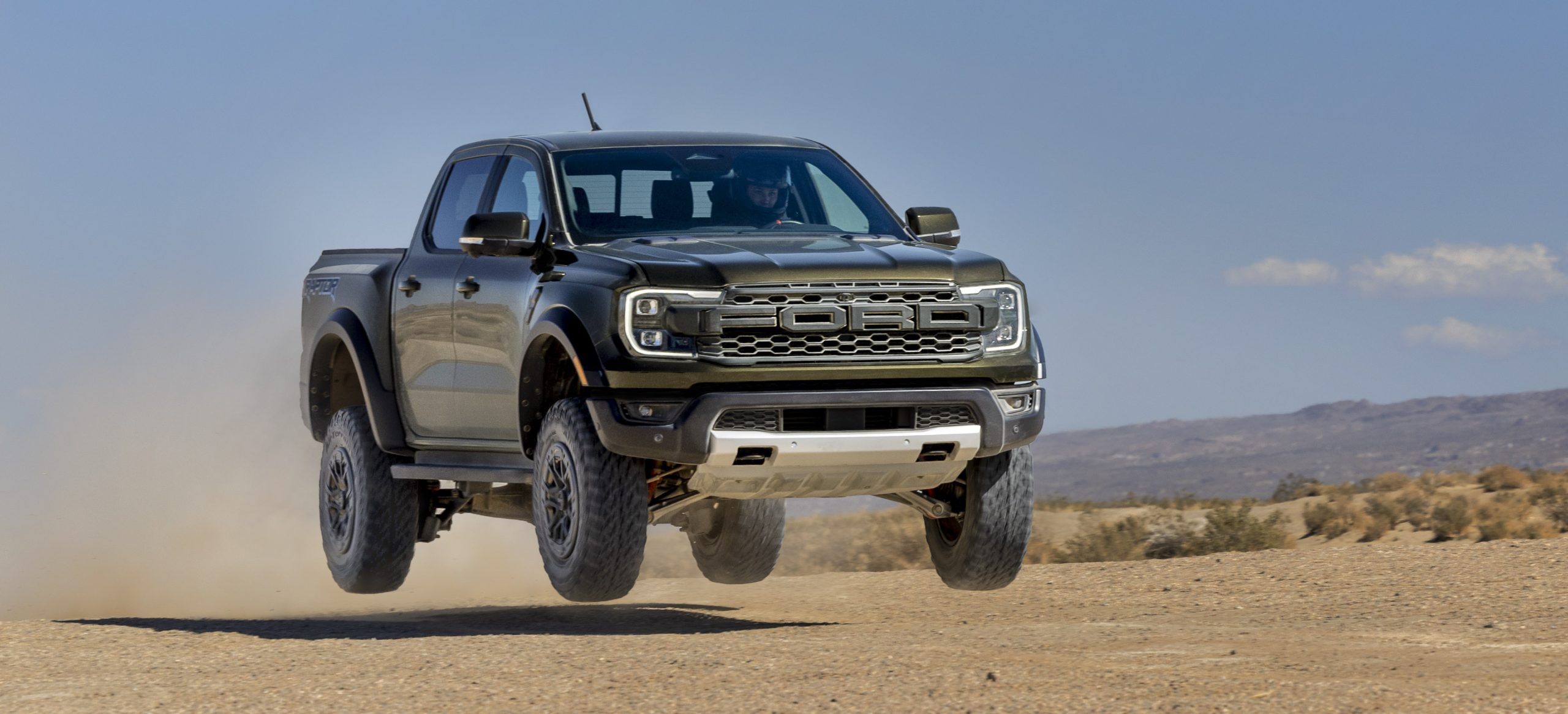
Specialized underbody protection plays a crucial role in the Ranger Raptor’s water-fording capability, with reinforced skid plates and sealed component housings that prevent water intrusion while protecting against impact damage from submerged obstacles.
The vehicle’s exhaust system incorporates strategic drainage points and elevated routing that prevents water accumulation while maintaining proper exhaust flow during crossings.
The Ranger Raptor’s advanced all-wheel-drive system features electronic locking differentials and sophisticated traction management that optimizes power delivery during water crossings.
The system continuously monitors wheel speed, throttle position, and vehicle stability to prevent wheel spin and maintain forward momentum.
Specialized programming for water crossing scenarios adjusts transmission shift patterns and torque distribution to maximize traction while minimizing the risk of drivetrain damage.
Ford’s Terrain Management System includes specific settings for water crossing scenarios, automatically adjusting multiple vehicle parameters to optimize performance and safety.
The system modifies throttle response, transmission behavior, stability control intervention, and differential locking to provide optimal traction and control during aquatic encounters.
Real-time feedback systems provide drivers with essential information about water depth, vehicle angle, and system status throughout the crossing process.
4. Isuzu mu-X
The Isuzu mu-X demonstrates exceptional water-fording capability with an 800mm (31.5 inches) wading depth, showcasing the brand’s decades of experience in creating robust, utilitarian vehicles for challenging global markets.
This impressive capability stems from Isuzu’s focus on mechanical simplicity, robust construction, and practical engineering solutions that prioritize reliability over complexity.
Isuzu’s approach to water-fording capability emphasizes proven mechanical systems and comprehensive component protection. The mu-X features a naturally aspirated diesel engine with a strategically elevated air intake system that prevents water ingestion during deep crossings.
The intake design incorporates pre-filtration chambers and water separation systems that ensure clean, dry air delivery even in extremely humid conditions or during splash-intensive crossings.
The mu-X’s electrical architecture utilizes industrial-grade components and protective measures that exceed typical automotive standards.
Critical electrical connections feature multiple sealing layers and corrosion-resistant materials that maintain functionality even after prolonged exposure to water and environmental contaminants.
The vehicle’s charging system, ignition components, and electronic control modules receive special treatment to ensure continued operation during and after aquatic encounters.
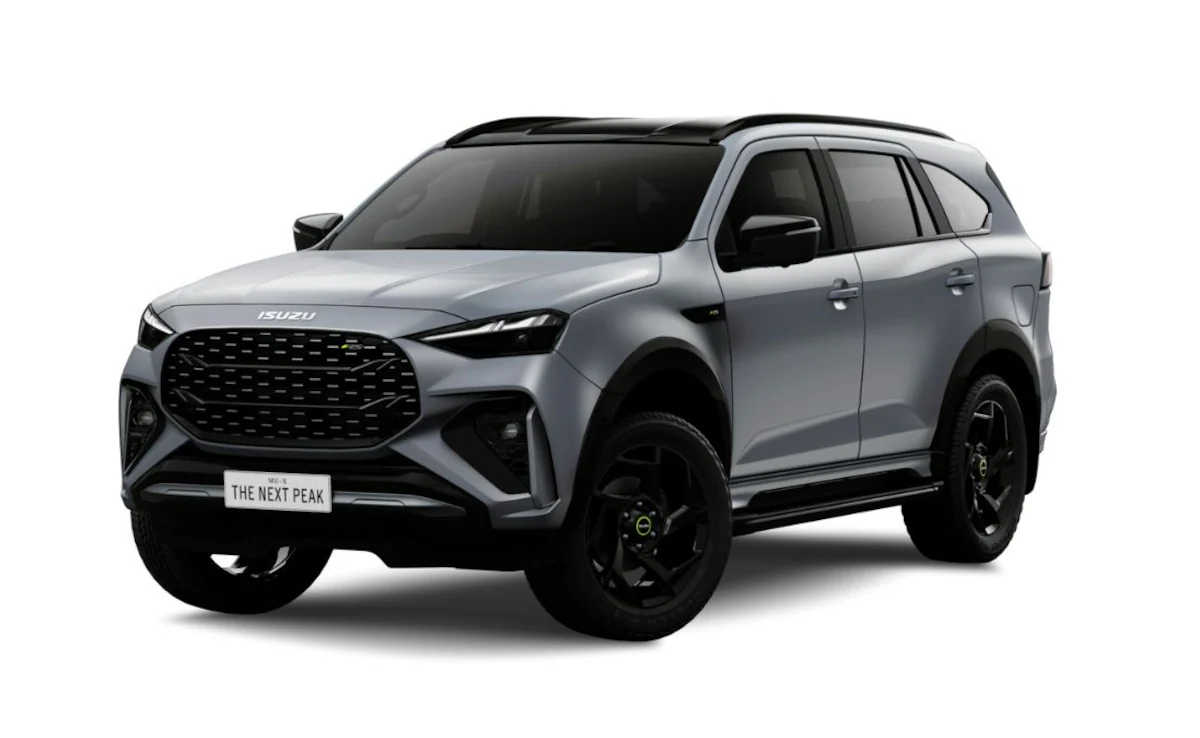
Robust mechanical design characterizes the mu-X’s approach to water-fording capability, with reinforced component housings, multiple seal systems, and comprehensive drainage channels that prevent water accumulation in critical areas.
The transmission, transfer case, and differential assemblies feature pressure equalization systems and high-quality sealing that maintains proper lubrication while preventing water intrusion during crossings.
The mu-X’s four-wheel-drive system incorporates mechanical locking differentials and simplified control systems that provide reliable traction management without complex electronic intervention.
This approach ensures consistent performance even if electrical systems experience temporary disruption during water crossings.
The system’s mechanical nature also facilitates field maintenance and repair in remote locations where electronic diagnostic equipment may not be available.
Practical considerations receive significant attention in the mu-X’s design, with easily accessible service points, comprehensive drainage systems, and user-friendly maintenance procedures that support extended operation in challenging environments.
The vehicle’s construction includes reinforced mounting points, sealed wiring harnesses, and strategic component placement that minimizes vulnerability to water damage while facilitating post-crossing inspection and maintenance.
Also Read: 5 Cars With Remote Kill Features and 5 That Keep Running After Theft
5. Mahindra Thar
The Mahindra Thar achieves impressive water-fording capability with a 650mm (25.6 inches) wading depth, representing the brand’s commitment to creating affordable, capable off-road vehicles for emerging markets and adventure enthusiasts.
This achievement combines practical engineering solutions with cost-effective manufacturing to deliver exceptional capability at accessible price points. Mahindra’s engineering philosophy for the Thar emphasizes mechanical simplicity and robust construction over complex electronic systems.
The vehicle’s turbocharged petrol and diesel engines feature elevated air intake positioning and comprehensive filtration systems that prevent water ingestion during challenging crossings.
The intake design incorporates multiple stages of water separation and filtration that ensure clean air delivery even during prolonged exposure to humid, splash-intensive conditions.
The Thar’s electrical architecture utilizes proven automotive components with enhanced protection measures specifically designed for harsh environmental conditions.
Critical electrical connections feature waterproof connectors and protective coatings that resist corrosion and maintain functionality after water exposure.
The vehicle’s simplified electronic systems reduce complexity while improving reliability in challenging conditions where sophisticated diagnostics may not be available.
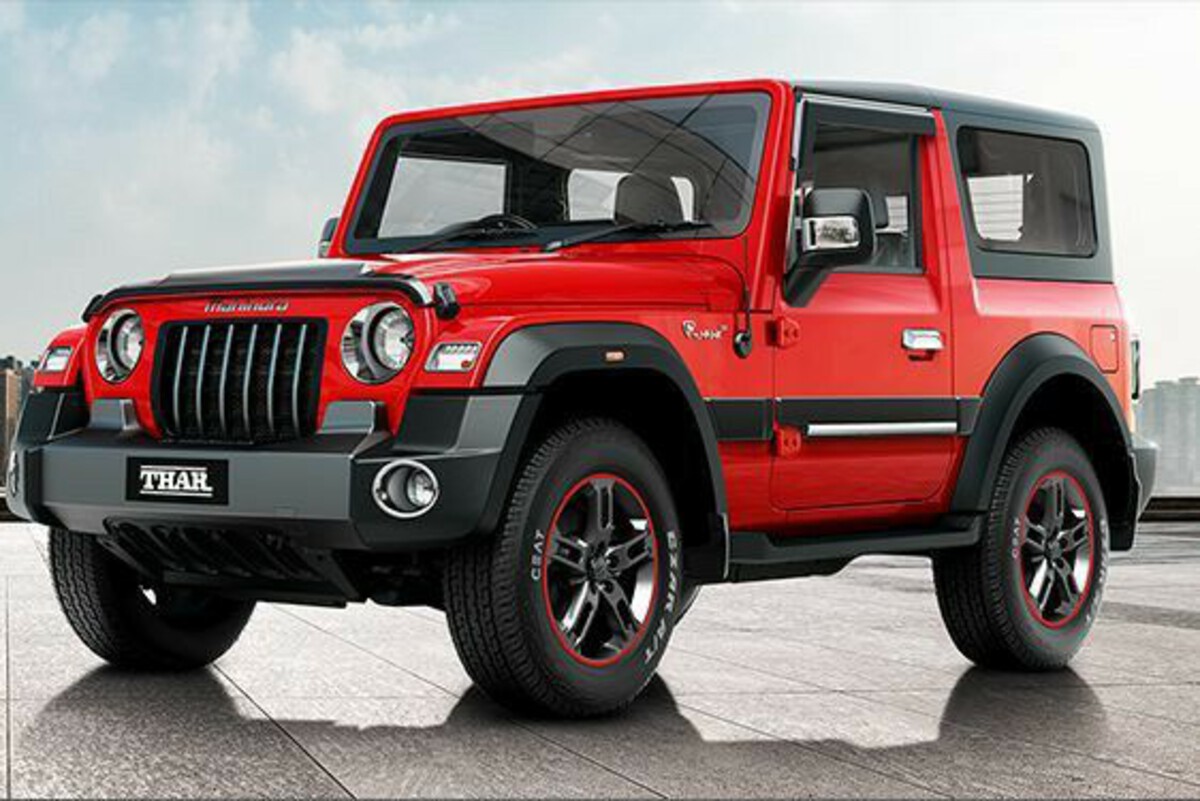
Mechanical design priorities in the Thar emphasize durability and serviceability, with robust component construction and accessible maintenance points that support extended operation in remote locations.
The vehicle’s four-wheel-drive system incorporates mechanical locking differentials and simplified control mechanisms that provide reliable traction management without dependence on complex electronic intervention.
This approach ensures consistent performance even during electrical system disruptions.
The Thar’s body construction includes reinforced floor panels, sealed component housings, and strategic drainage channels that prevent water accumulation while protecting critical mechanical systems.
The vehicle’s design facilitates post-crossing maintenance with easily removable access panels, comprehensive drain plugs, and user-friendly service procedures that can be performed with basic tools in field conditions.
Practical considerations receive significant attention in the Thar’s development, with cost-effective solutions that deliver exceptional capability without compromising reliability.
The vehicle’s straightforward mechanical systems, robust construction, and simplified electronic architecture create an ideal platform for adventure enthusiasts who require dependable water-fording capability without the complexity and cost associated with premium off-road vehicles.
5 SUVs with Low Ground Clearance
These lower-riding SUVs prioritize on-road comfort and fuel efficiency over water-crossing capability, resulting in limited ground clearance that makes them vulnerable to even moderate water depths.
Their sport-oriented suspension tuning and aerodynamic underbody panels create minimal clearance between critical components and the road surface, severely limiting their ability to handle flooded streets safely.
Sitting only slightly higher off the ground, the Mercedes-AMG SL has a ground clearance of 3.6 inches to give you a small area above the ground, representing the type of low-clearance design that struggles with water obstacles.
These vehicles typically feature air intakes positioned close to ground level and unprotected electrical components that become vulnerable when exposed to water depths exceeding their minimal clearance specifications.
Even shallow street flooding that other SUVs handle easily can overwhelm these lower-riding models, potentially causing engine damage through water ingestion or electrical system failures from submerged components.
1. Toyota C-HR
The Toyota C-HR represents the end of low ground clearance in the SUV segment with just 137mm (5.4 inches) of clearance, embodying Toyota’s bold approach to creating a distinctive, aerodynamically optimized crossover that prioritizes style and efficiency over traditional SUV capabilities.
This minimal clearance reflects a deliberate design philosophy that emphasizes urban driving dynamics and fuel economy optimization.
Toyota’s engineering approach for the C-HR focuses on creating a vehicle that combines SUV versatility with near-sedan handling characteristics and aerodynamic efficiency.
The extremely low ground clearance contributes significantly to the vehicle’s impressive fuel economy figures by reducing aerodynamic drag and lowering the center of gravity for improved stability at highway speeds.
This design approach represents a radical departure from traditional SUV conventions, creating a vehicle that appeals to style-conscious urban drivers who rarely encounter challenging terrain.
The C-HR’s suspension system utilizes sophisticated tuning and component optimization to maximize comfort and handling precision despite its minimal ground clearance.
The front MacPherson strut and rear multi-link suspension systems feature carefully calibrated spring rates and damping characteristics that provide excellent road holding while maintaining ride quality over typical urban road surfaces.
The low-slung design enables precise suspension geometry that delivers car-like handling dynamics within SUV packaging.
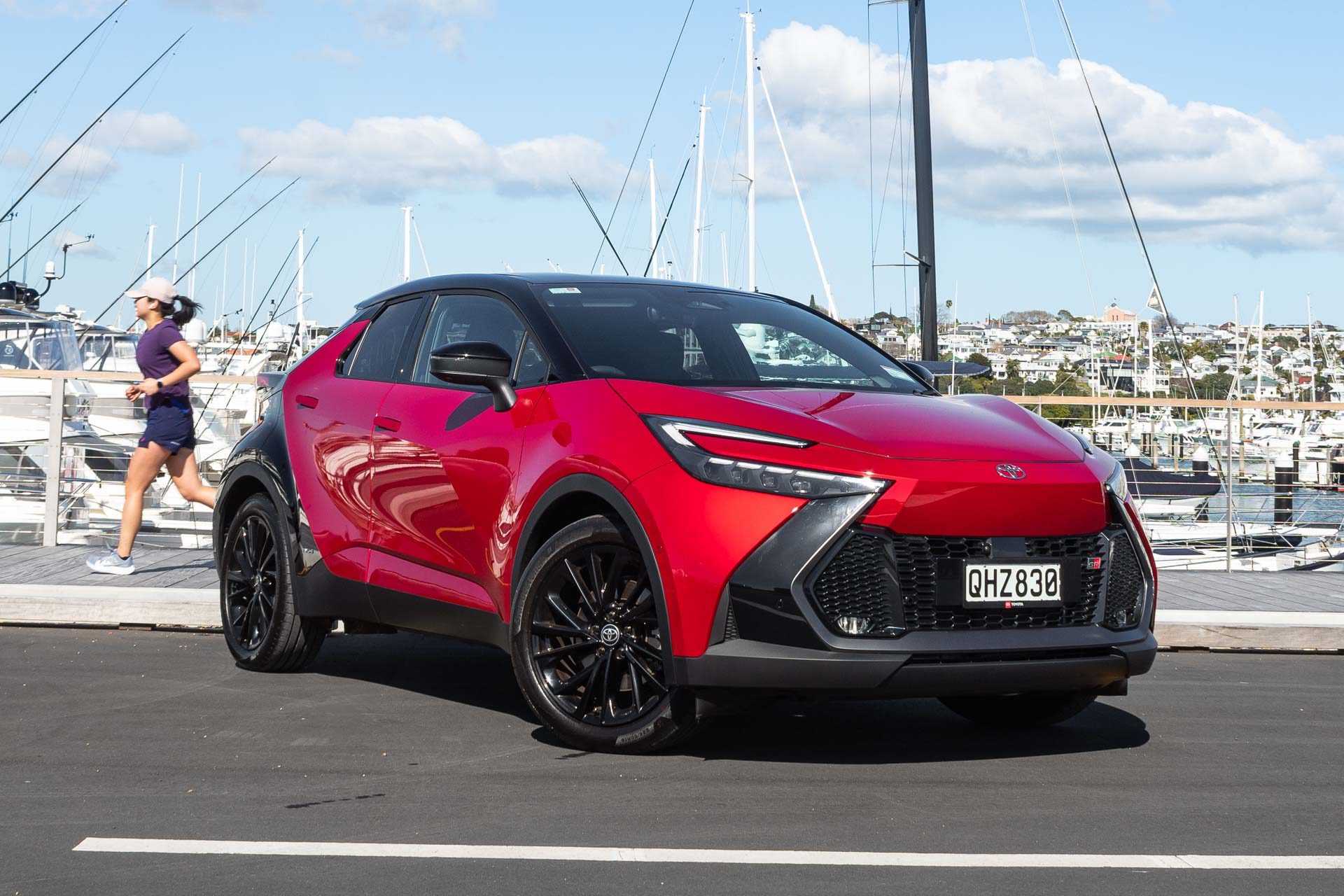
Aerodynamic optimization plays a crucial role in the C-HR’s design philosophy, with the low ground clearance contributing to smooth airflow under the vehicle and reduced drag coefficients that improve fuel economy and high-speed stability.
The vehicle’s distinctive styling incorporates active aerodynamic elements, strategic air dams, and comprehensive underbody paneling that work in conjunction with minimal ground clearance to create exceptional aerodynamic performance for the SUV segment.
The C-HR’s powertrain optimization takes advantage of the low ground clearance to create an efficient packaging solution that maximizes interior space while minimizing weight and complexity.
The hybrid powertrain system benefits from reduced aerodynamic drag and optimal weight distribution that contribute to impressive fuel economy figures and reduced emissions.
The vehicle’s low center of gravity enhances stability and cornering performance, creating driving dynamics that approach those of traditional passenger cars.
Interior packaging benefits significantly from the C-HR’s low-clearance design, with floor-mounted components positioned to maximize passenger space and cargo capacity despite the vehicle’s compact external dimensions.
The low floor height facilitates easy entry and exit while maintaining adequate headroom and legroom for passengers. This packaging efficiency demonstrates how aggressive ground clearance reduction can create practical benefits for urban-focused SUV applications.
2. Peugeot 2008
The Peugeot 2008 achieves minimal ground clearance of 165mm (6.5 inches) while maintaining distinctive SUV styling and practical functionality, representing the French manufacturer’s approach to creating efficient, stylish crossovers that excel in urban environments.
This design philosophy emphasizes aerodynamic efficiency, handling precision, and fuel economy optimization over traditional off-road capability.
Peugeot’s engineering approach for the 2008 focuses on creating a vehicle that delivers exceptional on-road dynamics while maintaining SUV versatility and commanding driving position.
The relatively low ground clearance contributes to improved aerodynamic performance and enhanced stability at highway speeds, while sophisticated suspension tuning ensures comfortable ride quality over typical road surfaces.
This balance represents Peugeot’s expertise in creating vehicles that excel in European urban environments.
The 2008’s suspension system utilizes advanced geometric optimization and component tuning to maximize comfort and handling precision despite its minimal ground clearance.
The front MacPherson strut and rear torsion beam suspension systems feature carefully calibrated characteristics that provide excellent road holding while maintaining ride quality over varied road surfaces.
The suspension tuning emphasizes comfort and refinement over outright off-road capability, creating driving dynamics that appeal to style-conscious urban drivers.
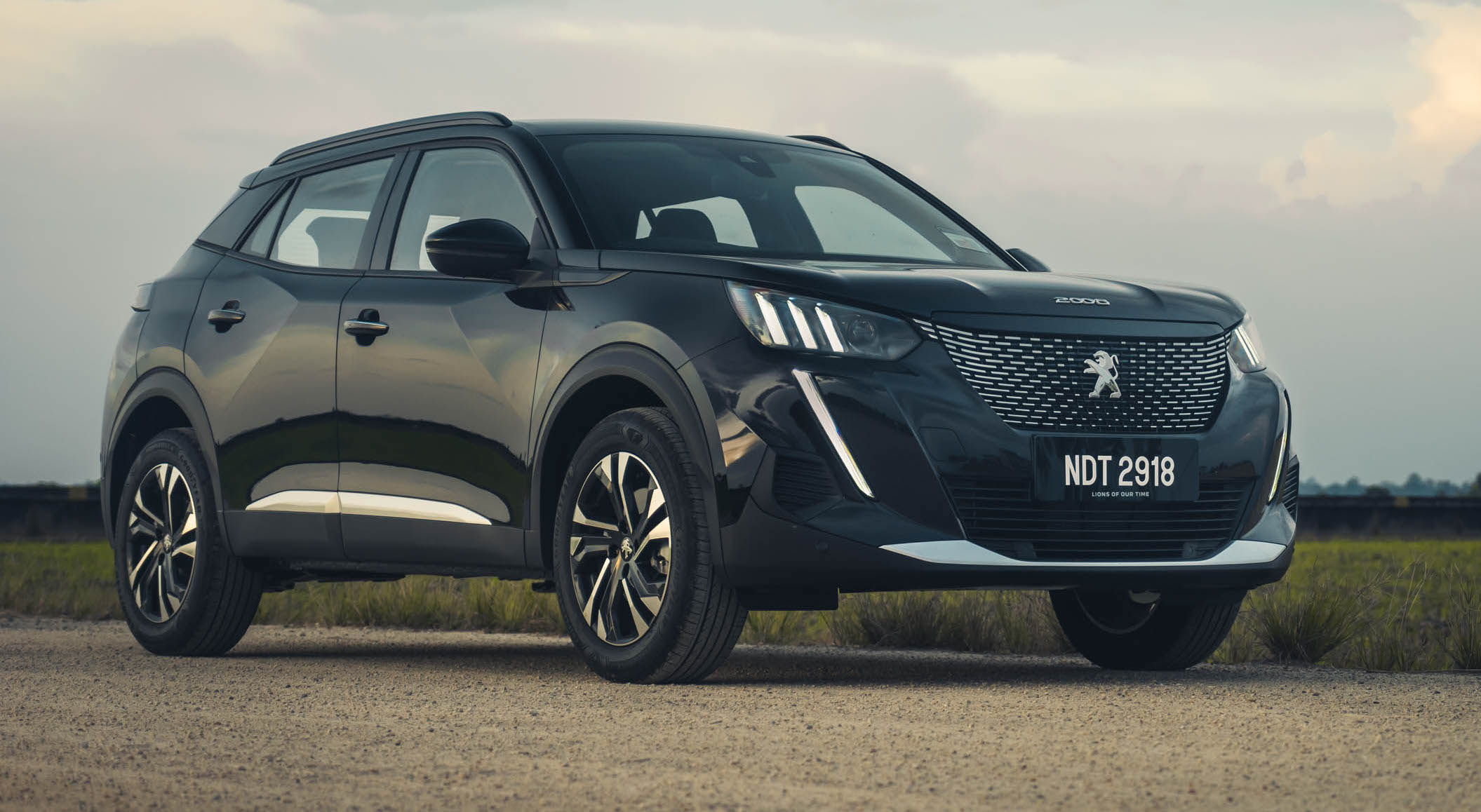
Aerodynamic efficiency receives significant emphasis in the 2008’s design, with the low ground clearance contributing to smooth underbody airflow and reduced drag coefficients that improve fuel economy and performance.
The vehicle’s distinctive styling incorporates active grilles, strategic air dams, and comprehensive underbody paneling that work in conjunction with minimal ground clearance to create exceptional aerodynamic performance for the crossover segment.
The 2008 powertrain lineup takes advantage of the aerodynamic efficiency created by low ground clearance to deliver impressive fuel economy figures and reduced emissions.
Both conventional and electric powertrains benefit from reduced aerodynamic drag and optimal weight distribution that enhance efficiency and performance.
The vehicle’s low center of gravity contributes to precise handling characteristics that distinguish it from higher-riding SUV competitors.
Interior design and packaging optimization benefit from the 2008’s low-clearance architecture, with strategic component placement that maximizes passenger space and cargo capacity within compact external dimensions.
The vehicle’s low floor height facilitates easy entry and exit while maintaining adequate interior space for passengers and cargo.
This packaging efficiency demonstrates Peugeot’s expertise in creating practical, efficient crossovers that meet urban driving requirements.
3. Hyundai Kona
The Hyundai Kona achieves ground clearance of 170mm (6.7 inches), positioning it among the lower-riding SUVs while maintaining distinctive styling and practical functionality that appeals to urban drivers seeking SUV versatility without traditional off-road capabilities.
This design approach reflects Hyundai’s focus on creating efficient, stylish crossovers that excel in contemporary driving environments.
Hyundai’s engineering philosophy for the Kona emphasizes creating a vehicle that delivers excellent on-road dynamics while maintaining SUV practicality and visual appeal.
The relatively low ground clearance contributes to improved aerodynamic performance, enhanced fuel economy, and precise handling characteristics that distinguish the Kona from higher-riding competitors.
This approach creates a vehicle that appeals to drivers seeking SUV versatility without sacrificing driving refinement.
The Kona’s suspension system utilizes advanced tuning and component optimization to maximize comfort and handling precision despite its minimal ground clearance.
The front MacPherson strut and rear multi-link suspension systems feature sophisticated calibration that provides excellent road holding while maintaining ride quality over typical urban road surfaces.
The suspension design emphasizes comfort and handling precision over outright ground clearance, creating driving dynamics that approach those of premium passenger cars.
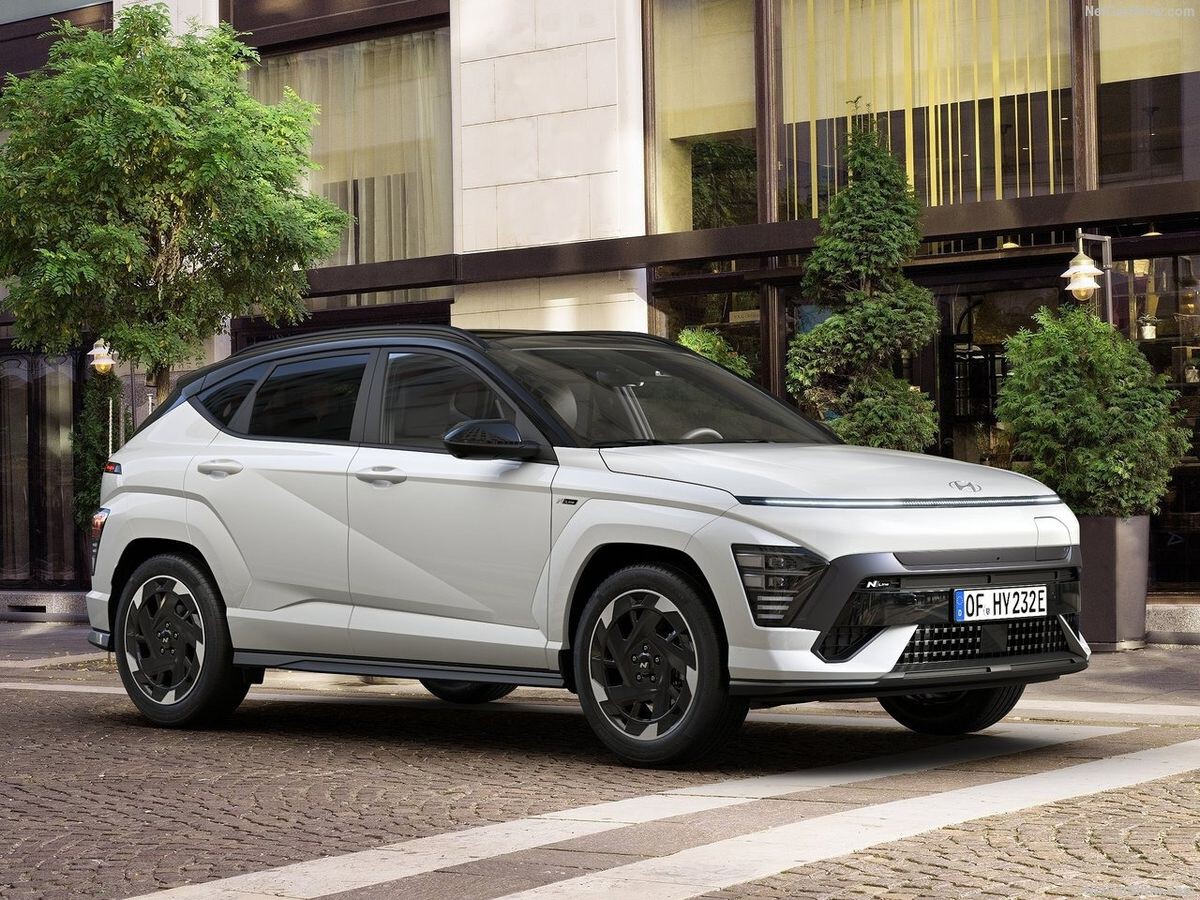
Aerodynamic optimization plays a significant role in the Kona’s design philosophy, with the low ground clearance contributing to smooth airflow characteristics and reduced drag coefficients that improve fuel economy and high-speed stability.
The vehicle’s bold styling incorporates active aerodynamic elements, strategic air management systems, and comprehensive underbody paneling that work in conjunction with minimal ground clearance to create exceptional efficiency for the SUV segment.
The Kona’s diverse powertrain lineup, including conventional, hybrid, and electric options, benefits significantly from the aerodynamic efficiency created by low ground clearance.
Each powertrain configuration takes advantage of reduced drag and optimal weight distribution to deliver impressive performance and efficiency figures.
The electric Kona particularly benefits from the aerodynamic optimization, achieving exceptional range and efficiency that positions it among the segment leaders.
Practical considerations receive careful attention in the Kona’s design, with the low ground clearance facilitating easy access while maintaining adequate cargo capacity and passenger space.
The vehicle’s packaging efficiency demonstrates Hyundai’s expertise in creating versatile crossovers that meet diverse consumer needs without compromising practicality or efficiency.
The low center of gravity enhances stability and cornering performance, creating engaging driving dynamics that distinguish the Kona from traditional SUV competitors.
4. Nissan Juke
The Nissan Juke maintains ground clearance of 180mm (7.1 inches), representing the brand’s approach to creating distinctive, style-focused crossovers that prioritize urban driving dynamics and fuel efficiency over traditional SUV off-road capabilities.
This design philosophy creates a vehicle that combines SUV versatility with near-passenger-car handling characteristics and aerodynamic optimization.
Nissan’s engineering approach for the Juke focuses on creating a vehicle that delivers exceptional urban driving dynamics while maintaining SUV practicality and distinctive visual appeal.
The relatively low ground clearance contributes to improved aerodynamic performance, enhanced fuel economy, and precise handling characteristics that create engaging driving experiences in urban environments.
This approach represents Nissan’s commitment to creating vehicles that stand out in the increasingly crowded crossover segment. The Juke’s suspension system utilizes sophisticated tuning and component optimization to maximize handling precision and ride comfort despite its minimal ground clearance.
The front MacPherson strut and rear multi-link suspension systems feature carefully calibrated characteristics that provide excellent road holding while maintaining comfort over typical road surfaces.
The suspension design emphasizes dynamic performance and stability over ground clearance, creating driving characteristics that appeal to enthusiast drivers.
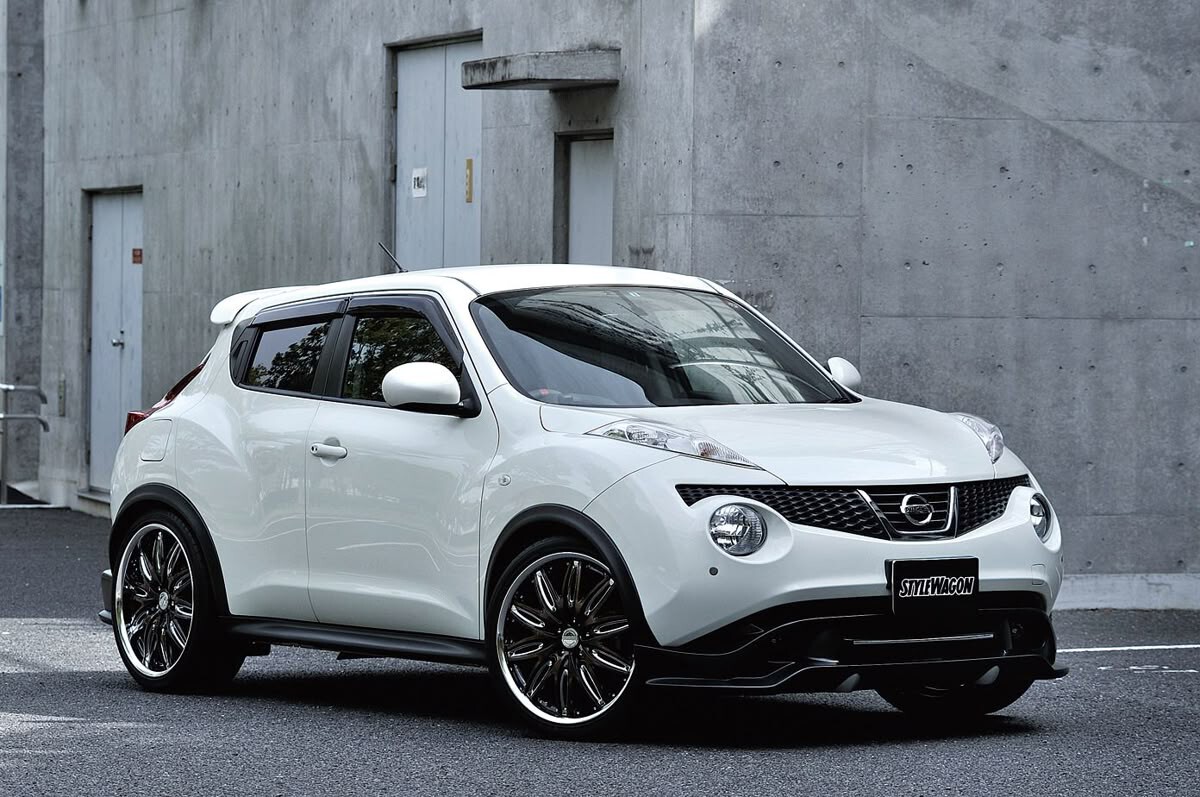
Aerodynamic efficiency receives significant emphasis in the Juke’s design, with the low ground clearance contributing to smooth underbody airflow and reduced drag coefficients that improve fuel economy and performance.
The vehicle’s distinctive, polarizing styling incorporates active aerodynamic elements, strategic air management systems, and comprehensive underbody optimization that work in conjunction with minimal ground clearance to create exceptional efficiency for the crossover segment.
The Juke’s turbocharged powertrain takes advantage of the aerodynamic efficiency created by low ground clearance to deliver impressive performance and fuel economy figures.
The engine’s sophisticated tuning and the vehicle’s aerodynamic optimization work together to create responsive acceleration and efficient highway cruising capabilities.
The low center of gravity enhances stability and cornering performance, creating driving dynamics that distinguish the Juke from higher-riding SUV competitors.
Interior packaging and design optimization benefit from the Juke’s low-clearance architecture, with strategic component placement that maximizes functionality within the vehicle’s distinctive external styling.
The vehicle’s unique design language creates a distinctive interior environment that appeals to style-conscious drivers while maintaining practical functionality for daily use.
This approach demonstrates Nissan’s willingness to challenge conventional SUV design principles to create vehicles that stand out in competitive markets.
5. BMW X2
The BMW X2 achieves ground clearance of 183mm (7.2 inches), embodying the premium German manufacturer’s approach to creating sporty, style-focused crossovers that emphasize dynamic performance and luxury refinement over traditional SUV off-road capabilities.
This design philosophy creates a vehicle that combines SUV versatility with premium passenger car driving dynamics and sophisticated engineering.
BMW’s engineering philosophy for the X2 focuses on creating a vehicle that delivers exceptional dynamic performance while maintaining SUV practicality and premium luxury characteristics.
The relatively low ground clearance contributes to improved aerodynamic performance, enhanced stability, and precise handling characteristics that create engaging driving experiences consistent with BMW’s performance heritage.
This approach represents the brand’s commitment to maintaining driving excellence across all vehicle segments. The X2’s sophisticated suspension system utilizes advanced tuning and premium components to maximize handling precision and ride comfort despite its minimal ground clearance.
The front MacPherson strut and rear multi-link suspension systems feature adaptive damping and sophisticated geometric optimization that provide excellent road holding while maintaining luxury-car comfort levels.
The suspension design emphasizes dynamic performance and refinement over ground clearance, creating driving characteristics that justify the premium positioning.
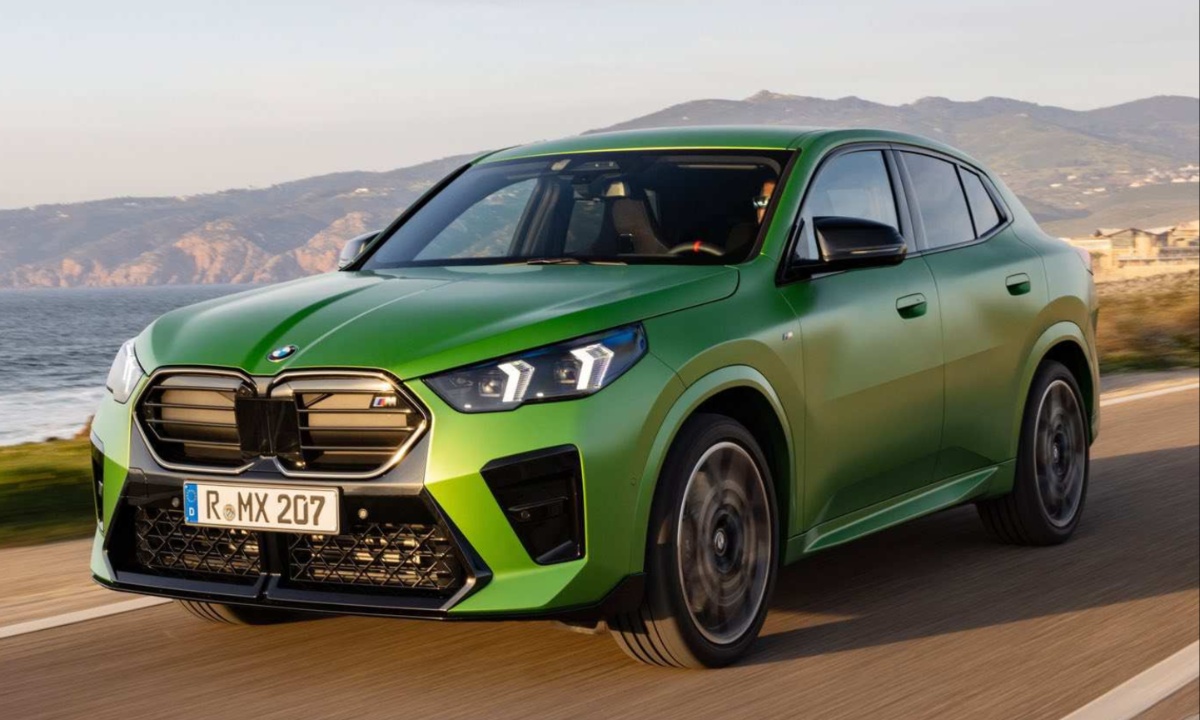
Aerodynamic optimization plays a crucial role in the X2’s design philosophy, with the low ground clearance contributing to sophisticated airflow management and reduced drag coefficients that improve fuel economy and high-speed stability.
The vehicle’s distinctive coupe-like styling incorporates active aerodynamic elements, strategic air management systems, and comprehensive underbody optimization that work in conjunction with minimal ground clearance to create exceptional efficiency and performance.
The X2’s diverse powertrain lineup, including conventional and electric options, benefits significantly from the aerodynamic efficiency and weight distribution optimization created by low ground clearance.
Each powertrain configuration takes advantage of reduced drag and optimal center of gravity to deliver impressive performance and efficiency figures that meet premium segment expectations.
The sophisticated powertrain integration creates seamless power delivery and refined operation characteristics.
Premium interior appointments and advanced technology integration benefit from the X2’s low-clearance architecture, with strategic packaging that maximizes luxury features and functionality within the vehicle’s distinctive styling.
The vehicle’s premium materials, advanced infotainment systems, and sophisticated driver assistance technologies create an interior environment that meets BMW’s luxury standards while maintaining practical functionality for daily use.
This comprehensive approach demonstrates BMW’s expertise in creating crossovers that satisfy diverse consumer requirements without compromising brand values or performance expectations.
Also Read: 5 Vehicles That Notify Police Automatically and 5 That Stay Silent

